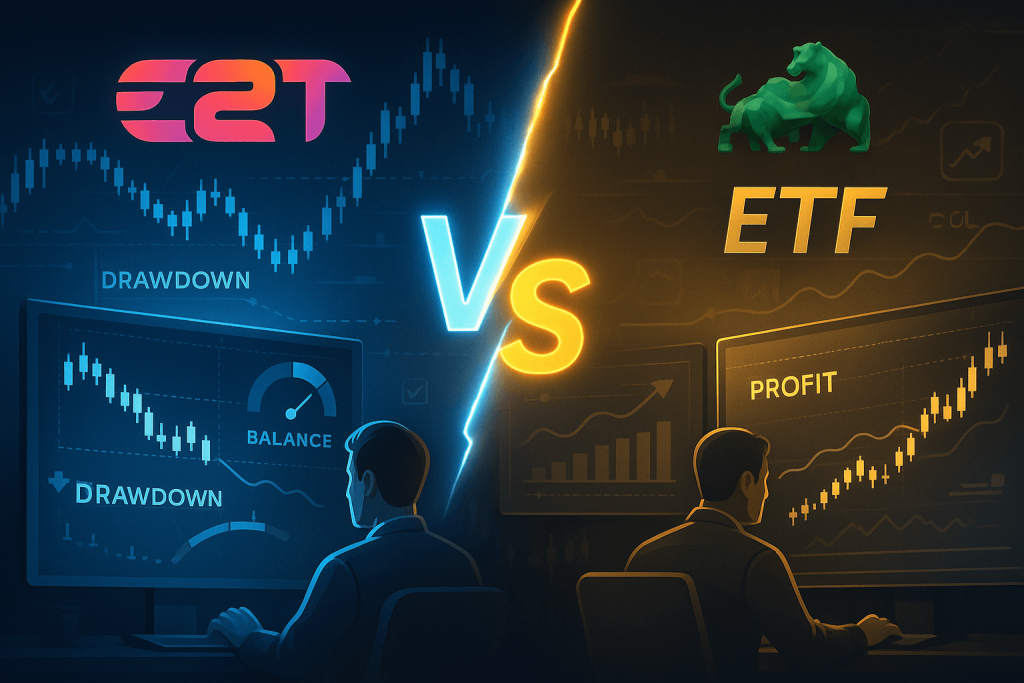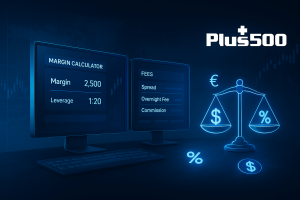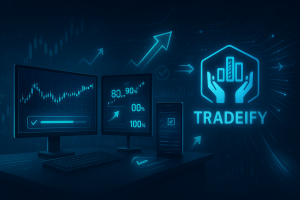Introduction
In futures prop trading, risk rules and drawdown limits often determine whether you stay funded or get disqualified—even more than your best trades. Two firms that many futures traders examine closely are Earn2Trade and Elite Trader Funding. Both offer evaluation-to-funding paths, but their approaches to daily loss limits, maximum drawdowns, trailing or fixed drawdowns, and flexibility around trading mistakes differ significantly.
Earn2Trade is known for its structured challenges (like the Gauntlet Mini and Trader Career Path) and offers clear rules around end-of-day drawdowns, trailing limits, and fixed drawdowns as one scales. Elite Trader Funding (ETF) offers evaluation plans for futures trading and includes features like removal of drawdown limits once you hit certain profit thresholds, consistency / “best day” rules, and “40% rule” constraints on withdrawal requests in some cases.
For a futures trader, comparing just the profit split or capital size isn’t enough—you must understand how harsh or forgiving the drawdown rules are, how they reset (or don’t) when you withdraw profits, what counts as your “worst day,” and how open equity is treated. That’s the core of this comparison: which firm gives you breathing room, which encourages disciplined risk, and which punishes mistakes more harshly.
Types of Drawdowns & How They Work
Understanding which type of drawdown a firm uses (end-of-day, trailing, fixed) is critical for knowing how your account can survive bad days.
Earn2Trade uses a combination of End-of-Day (EOD) Drawdown, Trailing Drawdown, and in higher account tiers, Fixed Drawdown.
- The End-of-Day Drawdown is updated at market close: it sets your required minimum account balance for the next day. If your open equity (including unrealized losses) dips below that minimum intraday, your account fails.
- The Trailing Drawdown rule is more dynamic: as your profits increase, your drawdown “floor” trails up. For example, if you start with $50,000 and your trailing drawdown starts at $48,000, when you gain $100, your trailing drawdown rises to $48,100. It continues until it reaches your original capital.
- For larger funded accounts (e.g. when scaling to $200,000 or $400,000), Earn2Trade employs a Fixed Drawdown—a static minimum balance you can’t fall below, regardless of further profits.
Thus, in Earn2Trade’s system, early accounts are governed by EOD and trailing rules, but once you reach certain scale, a fixed drawdown kicks in and locks in your safety floor.
Elite Trader Funding (ETF) also uses drawdown rules, but with a twist: in their Elite / funded accounts, they trail the minimum allowable balance until you earn realized profits equal to your max drawdown plus a buffer (often +$100). At that point, the drawdown becomes static (no more daily limit).
For example: you start with $25,000 and have a $1,500 drawdown buffer. If you profit $1,000 one day, your minimum allowed balance shifts upward (trails), but your daily loss limit remains. Once you reach cumulative profits that cover the original drawdown + extra, you no longer face a dynamic drawdown — your minimum becomes fixed.
ETF also enforces rules about which contract months you can trade (only high volume, current contracts) and number of open positions (e.g. cannot exceed a defined max). Violating those can result in forfeit or account failure.
Here’s a side-by-side:
| Drawdown Type | Earn2Trade | Elite Trader Funding |
| End-of-Day (EOD) drawdown | Yes, used in evaluation / LiveSim accounts | Yes, implicit in allowed minimum balance until fixed |
| Trailing drawdown | Yes, applied while account is active | Yes, trails until profit threshold reached |
| Fixed drawdown | Yes, in higher scaling tiers | Yes, once profit threshold reached, drawdown becomes static |
| When fixed kicks in | At scaling to higher tiers | Once realized profits reach “max drawdown + buffer” |
| Open equity considered | Yes — open losses can violate minimum | Generally yes — open losses below min balance can fail account |
If your trading style experiences intraday volatility, you’ll prefer firms with end-of-day or trailing rather than strict intraday mark-to-market rules. Earn2Trade gives you that approach early; ETF gives you a dynamic buffer until you “lock in” your drawdown.
Daily Loss / Intraday Rules
Another critical layer is: beyond drawdowns, how much can you lose in a single day? And how do intraday swings count?
In Earn2Trade, there is a Daily Loss Limit (Daily Max). If your intraday realized losses hit or exceed that amount, your account is invalidated. For example, with certain evaluation programs, Earn2Trade sets daily drawdown thresholds (e.g. $1,100 for a $100,000 account) as part of the Gauntlet Mini challenge.
Additionally, because Earn2Trade’s EOD drawdown is updated daily, open equity losses also count: if during intraday swing your equity momentarily dips under the minimum allowed (even if subsequent trades recover), you may fail.
Earn2Trade’s rules combine both intraday constraints and daily resets, so maintaining consistent risk discipline day to day is critical.
In ETF, their rules also impose intraday restrictions. One notable rule: minimum trade duration. ETF prohibits ultra-short trades (HFT behavior) — all trades must be open at least 10 seconds. This stops abuse of minimal latency strategies.
ETF also requires closing all positions 1 minute before market close. If you fail to do this, you risk account termination or profit forfeiture.
Another ETF constraint is their “40% rule” (for accounts before August 2024) when initiating withdrawals: your best active trading day cannot exceed 40% of total accumulated profits. If it does, you may not get full credit that day or may face constraints.
ETF further enforces consistency rules: to count as an active trading day (for payout eligibility), you must realize a profit of at least $200 and the day’s profit must be ≥ 23% of your best day profit in some programs.
Here’s how they compare for daily / intraday rules:
If your strategy involves occasional large intraday swings or fast scalps, ETF’s minimum trade duration rule is a constraint, while Earn2Trade demands careful control of intraday dips relative to EOD floors.
Drawdown Resets, Scaling & Withdrawal Effects
How rules reset (or don’t) when you withdraw profits or scale up is a vital distinction.
With Earn2Trade, once you’re in a funded account, you can withdraw your share of profits subject to rules. After you scale to higher tiers, the drawdown structure may shift to fixed thresholds. Also, in certain plans, Earn2Trade removes the daily loss limit when your lower threshold (i.e. the current account balance minus allowed drawdown) reaches or exceeds the starting balance. That means your account has “earned back” enough to eliminate daily limits.
When you make a withdrawal, your remaining capital becomes your new baseline relative to drawdown constraints. That means your buffer shrinks accordingly.
In ETF, the drawdown buffer behaves dynamically until you reach a profit threshold (drawdown + buffer). After that, the drawdown becomes static (no more trailing). Once that static point is established, your minimum allowable balance no longer moves upward. If you later drop below that fixed threshold, you’ll fail.
ETF also enforces rules about withdrawals: a 40% rule for older accounts (best day profit proportion) may affect how much of your profit you can request from certain days. For newer accounts, ETF offers up to 100% payout on first $12,500, then 90% split beyond that.
Also, ETF limits the number of payouts or active trading days before they may convert you to a LIVE ELITE account or adjust capital. For example, traders may max out at 5 payouts or 50 active trading days before evaluation for LIVE status.
Here’s a comparative view:
If you prefer that your drawdown rules loosen over time or that you don’t penalize withdrawals harshly, ETF’s model gives you a chance to lock in safety after performance. Earn2Trade gives more predictable and structured transitions.
Flexibility & Penalties for Mistakes
No trader is perfect. The question is: how forgiving (or punitive) is the prop firm when things go wrong?
Earn2Trade’s structure is comparatively rigid: any violation of daily loss, open equity falling under minimum, or contract size rules can lead to account failure. Because open equity matters, even temporary swings below your floor can disqualify you. Their reset options exist (you can buy a reset in some plans), but risk discipline is essential.
Additionally, Earn2Trade charges a activation / setup fee in some cases (e.g. $139 deducted from first withdrawal for LiveSim accounts) and minimum withdrawal thresholds (for example, needing $239 in profit) to cover those setup fees.
ETF, likewise, imposes strict rules when mistakes happen. Violations of contract rules, trading low liquidity contracts, or exceeding allowed open positions can result in account termination or profit forfeiture.
ETF also bans ultra-rapid trading via the minimum 10 second trade duration rule. Violating it may get you penalized or disqualified. Failing to close positions by 1 minute before market close is another penalty risk.
ETF’s “40% rule” may act as a penalty: if your best trading day exceeds 40% of total profits, that day’s profit may not count fully for withdrawal. They also strictly monitor Active Trading Days—a trade done just to tick off a day may be invalidated if deemed artificial.
Furthermore, ETF can convert your account to LIVE ELITE or close it if you don’t meet performance consistency or exceed payout / day caps.
Overall, ETF offers more paths to loosen restrictions once you prove yourself, but also has more rules to violate early on. Earn2Trade’s approach is steadier and straightforward—but less forgiving of intraday missteps.
TradingVPS: Powering Faster Execution and Stability for Futures Traders
In the world of futures prop trading, milliseconds can decide whether you capture or miss a profitable trade. Reliable execution and zero downtime aren’t luxuries — they’re essentials. That’s where TradingVPS delivers a decisive edge.
Built specifically for professional and prop firm traders, TradingVPS offers ultra-low latency hosting (0–1 ms) to major futures broker servers like CME, NinjaTrader, and Tradovate. Designed on Windows Server 2022 with high-frequency-optimized CPUs and NVMe SSD storage, it ensures lightning-fast order routing, even during peak volatility or news events.
Whether you’re running multiple Earn2Trade or Elite Trader Funding accounts simultaneously, or executing algorithmic and automated strategies, TradingVPS provides dedicated resources — eliminating the bottlenecks and lag often experienced on shared hosting solutions. This means every order, strategy, and chart loads instantly and performs consistently.
Plans are built for scalability: from the VPS Lite tier for individual traders to Dedicated Trading Servers capable of handling complex, multi-account or multi-platform workloads. All plans include DDoS protection, automated daily backups, global accessibility, and multi-monitor support (up to six displays) — ideal for multi-chart analysis or high-frequency setups.
TradingVPS also guarantees 99.99% uptime, so your positions and expert advisors stay connected 24/7 — even if your local system disconnects. With average speeds under a millisecond to leading exchanges, you’ll experience noticeably faster trade execution, tighter fills, and fewer missed entries during volatile market conditions.
For professional futures traders managing risk across firms like Earn2Trade and ETF, TradingVPS combines power, reliability, and precision, helping you maintain a smooth trading environment while adhering to strict drawdown and loss-limit rules.
Key Benefits:
- Ultra-low latency (0–1 ms) to major futures brokers and prop firm servers
- Dedicated resources — no shared CPU or bandwidth throttling
- 100% uptime SLA with auto-failover protection
- Supports MetaTrader 4/5, NinjaTrader, Tradovate, and cTrader
- Secure DDoS protection and daily backups
- Multi-monitor setups for advanced charting and risk control
- Global access from desktop or mobile with encrypted remote login
Whether you’re scaling your Earn2Trade account, managing multiple ETF evaluations, or optimizing automated trading bots, TradingVPS gives you the technical foundation to trade faster, safer, and more consistently.
Summary Comparison & What It Means for Futures Traders
Here’s a consolidated comparison focusing on drawdowns, daily rules, resets, and penalties:
| Feature | Earn2Trade | Elite Trader Funding |
| Drawdown types | EOD + trailing early, fixed later | Trailing until profit threshold, then fixed |
| Daily limit / intraday | Yes, rigid daily max + open equity checks | Trade duration rule, must close positions near session end |
| Drawdown after withdrawal | New base becomes remaining capital | Drawdown becomes static once performance threshold hit |
| Removal of daily limit | Possible when your buffer earns back | No daily drawdown after threshold achieved |
| Penalties / rule violations | Immediate failure, hard constraints | Disqualification, forfeiture, conversion, strict checks |
| Flexibility | Rigid, consistent rules | More flexibility over time once thresholds are met |
For a futures trader, these distinctions matter:
- If your strategy involves intraday swings, trades that may temporarily dip equity below your allowed floor, or occasional drawdown dips, the more forgiving end-of-day / trailing structure is safer — in that respect, Earn2Trade may be more consistent and predictable.
- If you can avoid making early mistakes and consistently move upward, ETF’s model of easing constraints once you hit profit thresholds can let you relax risk controls later on.
- ETF’s trade duration, contract liquidity, and close-before-end-of-session rules are stricter than many prop firms; if your system requires quick scalps or holding close to market close, you may hit constraints.
- Withdrawal mechanics and how drawdowns reset (or don’t) impact how comfortable you feel extracting profits without jeopardizing your buffer.
If I had to pick which might suit a methodical futures trader who values stability and safety margins, I lean toward Earn2Trade because its rules are more transparent and consistent from day one. But for a trader confident in clean performance and ready to be “rewarded” by more freedom later, ETF offers an appealing path.




